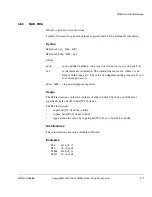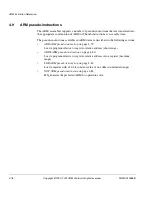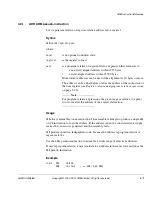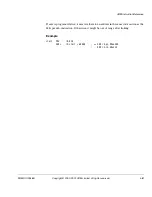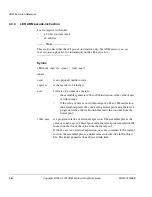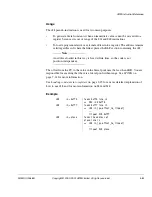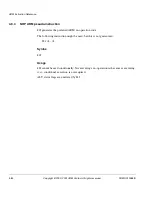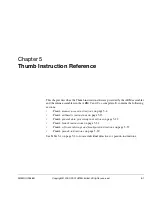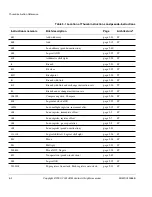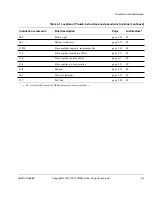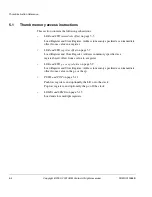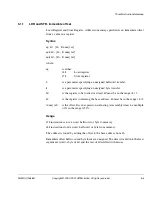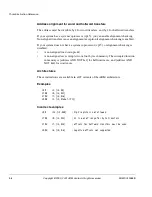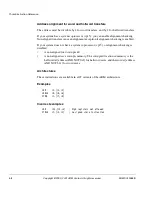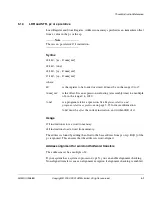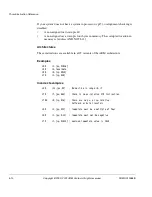
ARM Instruction Reference
ARM DUI 0068B
Copyright © 2000, 2001 ARM Limited. All rights reserved.
4-79
4.9.1
ADR ARM pseudo-instruction
Load a program-relative or register-relative address into a register.
Syntax
ADR{
cond
}
register
,
expr
where:
cond
is an optional condition code.
register
is the register to load.
expr
is a program-relative or register-relative expression that evaluates to:
•
a non word-aligned address within
±
255 bytes
•
a word-aligned address within
±
1020 bytes.
More distant addresses can be used if the alignment is 16 bytes or more.
The address can be either before or after the address of the instruction or
the base register (see
Register-relative and program-relative expressions
on page 3-23).
Note
For program-relative expressions, the given range is relative to a point
two words after the address of the current instruction.
Usage
ADR
always assembles to one instruction. The assembler attempts to produce a single
ADD
or
SUB
instruction to load the address. If the address cannot be constructed in a single
instruction, an error is generated and the assembly fails.
ADR
produces position-independent code, because the address is program-relative or
register-relative.
Use the
ADRL
pseudo-instruction to assemble a wider range of effective addresses.
If
expr
is program-relative, it must evaluate to an address in the same code section as the
ADR
pseudo-instruction.
Example
start MOV r0,#10
ADR r4,start ; => SUB r4,pc,#0xc













